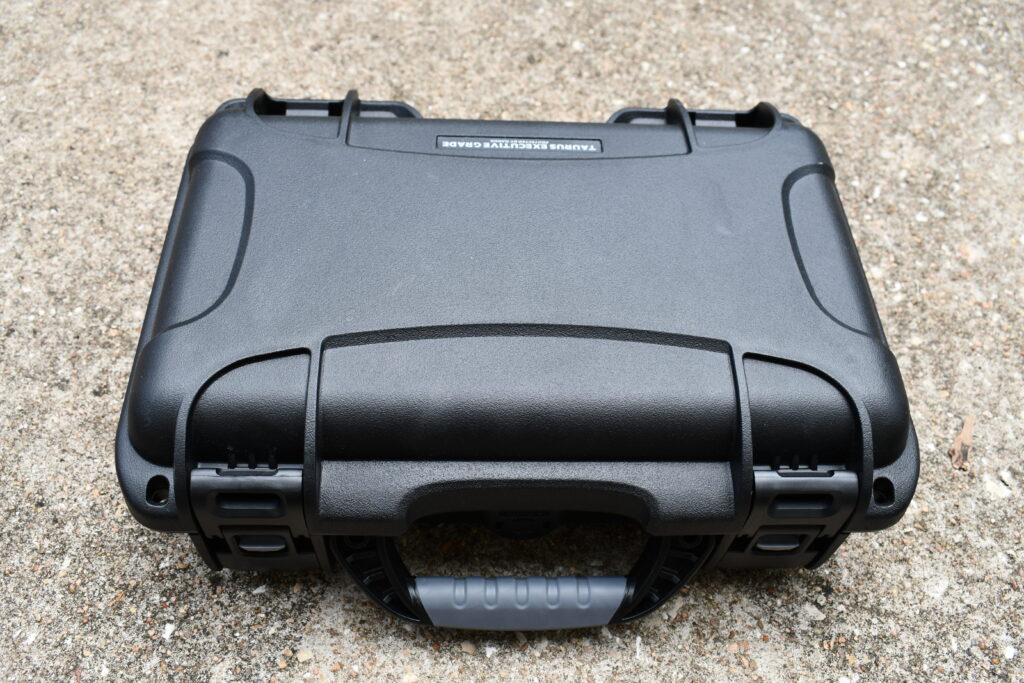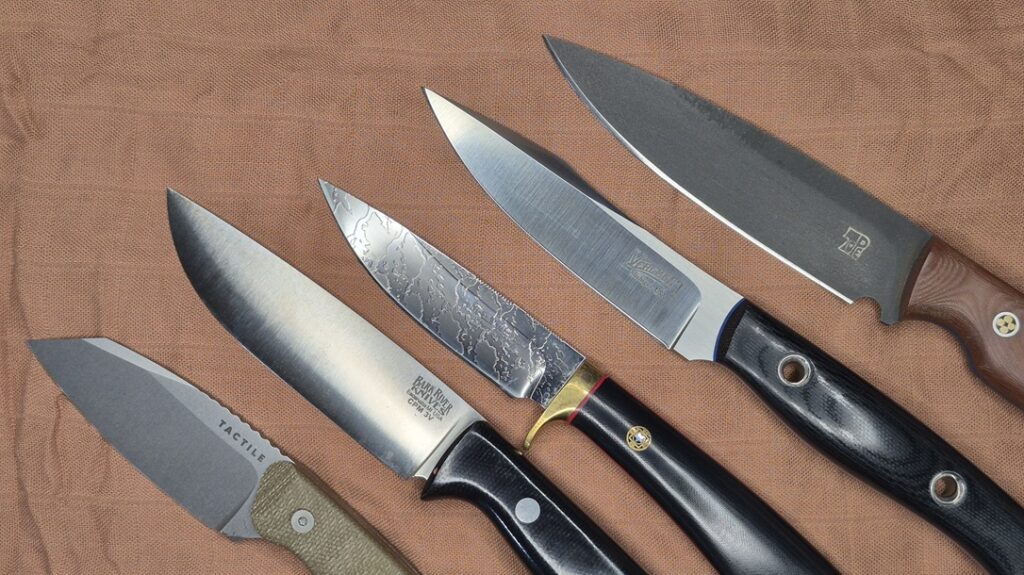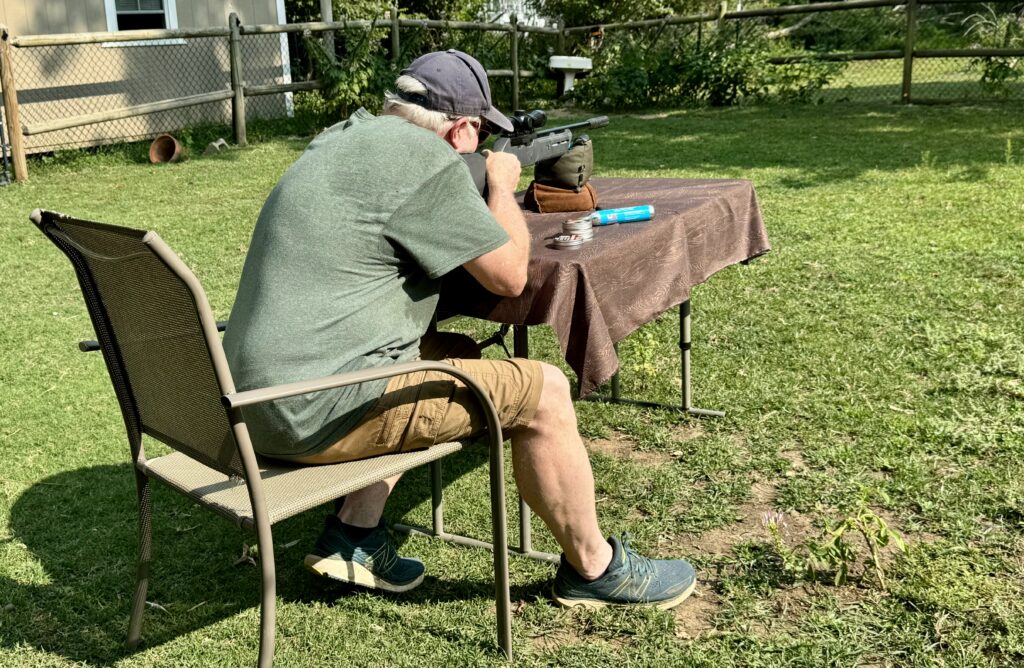This is the second part of my review of the Taurus 692 Executive Grade revolver. You can read Part 1 here.
Ergonomic Trigger And Hammer

Ignition with the Taurus 692 EXG comes by way of an exposed hammer and a modern frame-mounted firing pin. The hammer, which matches the rest of the revolver with the same satin hue, has a wide, knurled spur. The trigger also has a matching satin stainless tone.
Advertisement — Continue Reading Below
I appreciate that neither the hammer spur nor the face of the trigger is excessively wide, as one would find on a more purpose-driven, accurized target revolver. Working in tandem with the hammer is a transfer bar safety of the same type commonly found on virtually all modern-produced Taurus revolvers.
The width of the trigger face is just about perfect. It’s not too narrow nor too wide while also being smooth and rounded. On revolvers, length of pull will vary with stocks. But the distance, as measured from the centermost portion of the trigger face to the interior of the Altamont stocks’ sinusoidal curve, is about 1.75 inches.
Executive Grade Action
As part of the Executive Grade family, this revolver’s action gets extra attention compared to the typical Taurus Tracker offerings. As such, the trigger pull is smoother out of the box compared to the standard models. Using a digital trigger pull scale, ten double action trigger pulls averaged out to 9 lb, 12 oz. In single action, ten trigger pulls averaged out to 6 pounds even.
Advertisement — Continue Reading Below
This revolver isn’t a match-grade competition gun, so expecting that type of trigger pull from the factory is pointless. However, for a general-purpose revolver or gun that’s likely to be carried on the hip, the smoothness and feel from the factory double-action trigger pull are fantastic.
My experience with Taurus products also means that this trigger will wear in and feel even better after some use. I tend to shoot virtually every revolver with a double-action trigger pull, and this one gets no complaints from me. With a proper grip, it’s smooth enough to not disturb the sight picture.
At this point, I’ve fired nearly 250 rounds of .357 Magnum loaded with various bullets and propellants. Due to the open nature of the revolver’s architecture, they tend to accumulate soot from propellants more so than semi-auto handguns. Oftentimes, this extra layer of soot and fouling starts to affect the trigger’s linkage in both trigger pull smoothness and the manner in which the cylinder rotates.
Advertisement — Continue Reading Below
The 692 EXG’s satin finish seems to resist this soot and reinforce the action’s smoothness.
Quick Change Cylinders
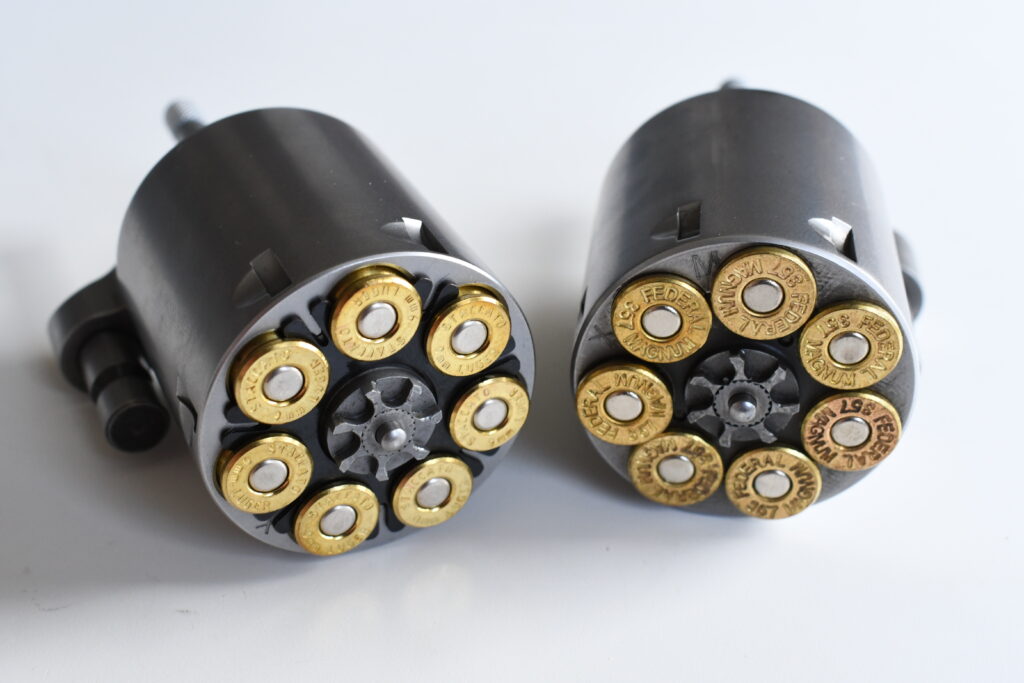
In addition to the Taurus 692 Executive Grade’s fit, finish, and craftsmanship, its most distinctive feature set is also what comprises the heart of this very revolver: its multi-caliber quick-change cylinder feature. It allows end users to easily shoot three different types of ammunition through the same revolver: .357 Magnum, .38 Special, and 9mm Luger.
Advertisement — Continue Reading Below
Virtually any revolver chambered for .357 Magnum will safely handle .38 Special cartridges; the .357 Magnum is based on the .38 Special, after all. 9mm Luger is a rimless and tapered pistol cartridge meant for semi-auto handguns. This places it in a different league from straight-wall rimmed revolver rounds. However, it still shares a nominal diameter of .35-caliber along with .38 Special and .357 Magnum.
Most 9mm projectiles tend to measure between .355 to .356 inches in diameter, while most .38/.357 projectiles measure between .357 and .358 inches, depending on style. With only 2 to 3 thousandths of an inch in difference, it can be fired safely through the same bore.
The included fitted cylinders are unfluted with the same satin stainless steel finish as the rest of the 692 EXG’s metal. Because fluted cylinders are still the norm in the world of revolvers, the lack of flutes, in this case, adds another layer of distinction. Moreover, both cylinders each have 692 EXG’s unique serial number engraved along with the caliber. Both the 9mm cylinder and the .38/.357 cylinder have a seven-round capacity.
Advertisement — Continue Reading Below
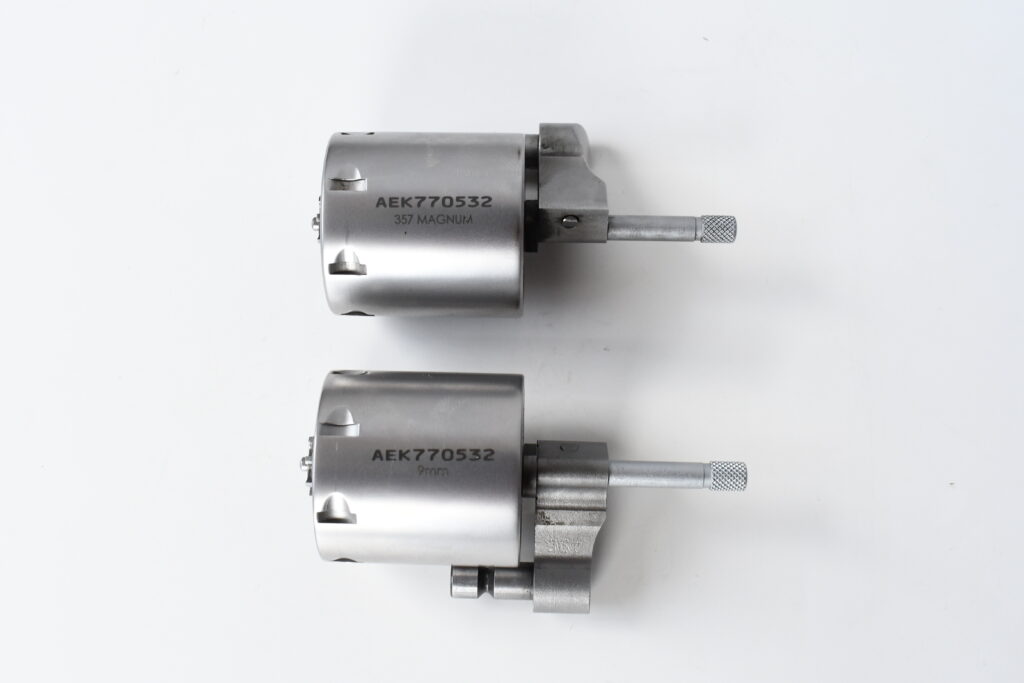
Cylinder Retention System
Beyond the lack of cylinder fluting and the physical versatility provided by the ability to handle three different calibers, I think the Taurus 692 Executive Grade’s cherry-on-top is a one-of-a-kind “cylinder retention system.” I’ve previously touched on this feature in my article about how important revolver yoke screws are.
Most revolvers use the yoke screw (a specialized set-screw) to keep its yoke and cylinder securely fastened to the frame. Removing these components means that this screw must be undone every time. In the case of every multi-caliber Taurus Tracker revolver that ships with different cylinders, the traditional yoke screw is omitted and replaced by a spring-tensioned quick-detach plunger that holds yokes in place.
Advertisement — Continue Reading Below
With this Taurus Tracker-specific feature, removing and switching cylinders only takes the literal push of a button and adds to the level of modularity and convenience that a multi-caliber revolver affords in the first place. Furthermore, the “cylinder retention system” also prevents undue wear and tear on the would-be yoke screw and its fine threads. Quite frankly, it’s such a novel yet simple detail that helps make the Taurus 692 EXG more functional.
The 692 EXG’s sideplate still uses a screw in the same spot where standard yoke screws fit. However, in this case, it only supports the sideplate. The QD plunger assembly is completely independent and most resembles the mechanism of a 1911 magazine catch.
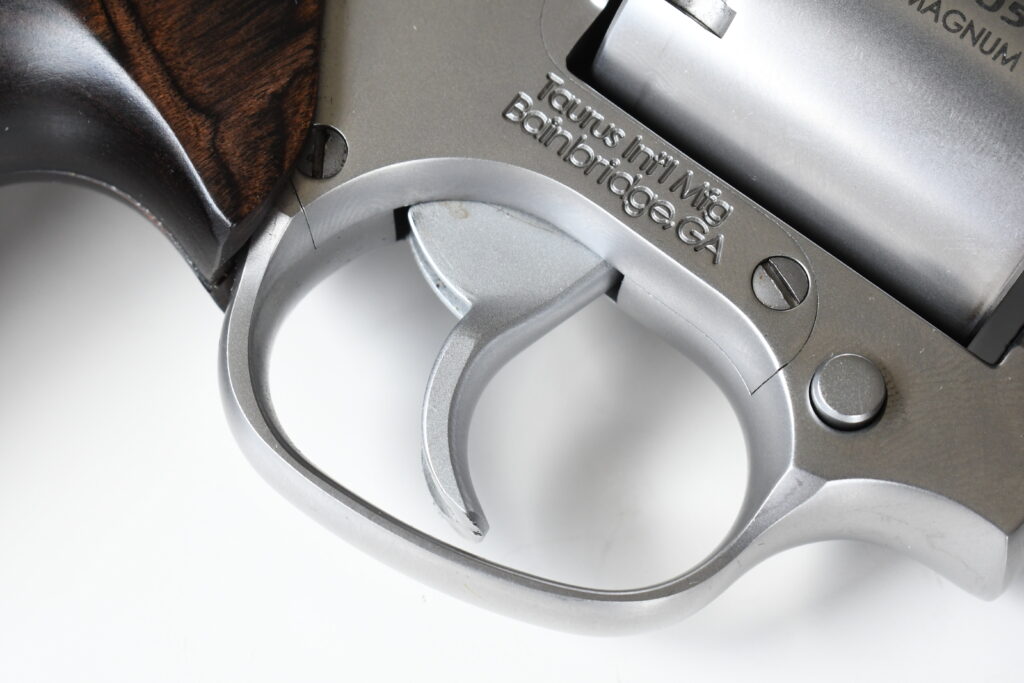
Advertisement — Continue Reading Below
Each Revolver Gets A Nanuk Transportation Case
In today’s market, ample handguns ship with basic cases, and this is something most reviewers, including myself, tend to gloss over as it’s not too directly relevant. However, I’m making an exception for this review because Taurus sends each 692 Executive Grade revolver in a hard-sided, impact-resistant, sturdy Nanuk carrying case.
The case’s interior has egg-carton padding and foam inserts with a cutout for the revolver and a separate cut-out for the spare cylinder assembly. These Nanuk cases also employ a pair of “Powerclaw” latches along with a prominent gasket to seal the inside and a pressure-release valve. It also includes a pair of reinforced holes for padlocks.
I think the inclusion of this case is a legitimate value add to every Taurus 692 Executive Grade revolver that’s sold. The revolver-shaped foam cut-out can be removed, so almost any full-size (or smaller) pistol, a spare magazine, and a 50-round box of ammunition will fit inside this Nanuk case, making it convenient for airline travel.
Advertisement — Continue Reading Below
Externally, the case itself isn’t too thick and reasonably fits in most checked baggage. In fact, this summer, I’ve flown with this Nanuk case at least once.

